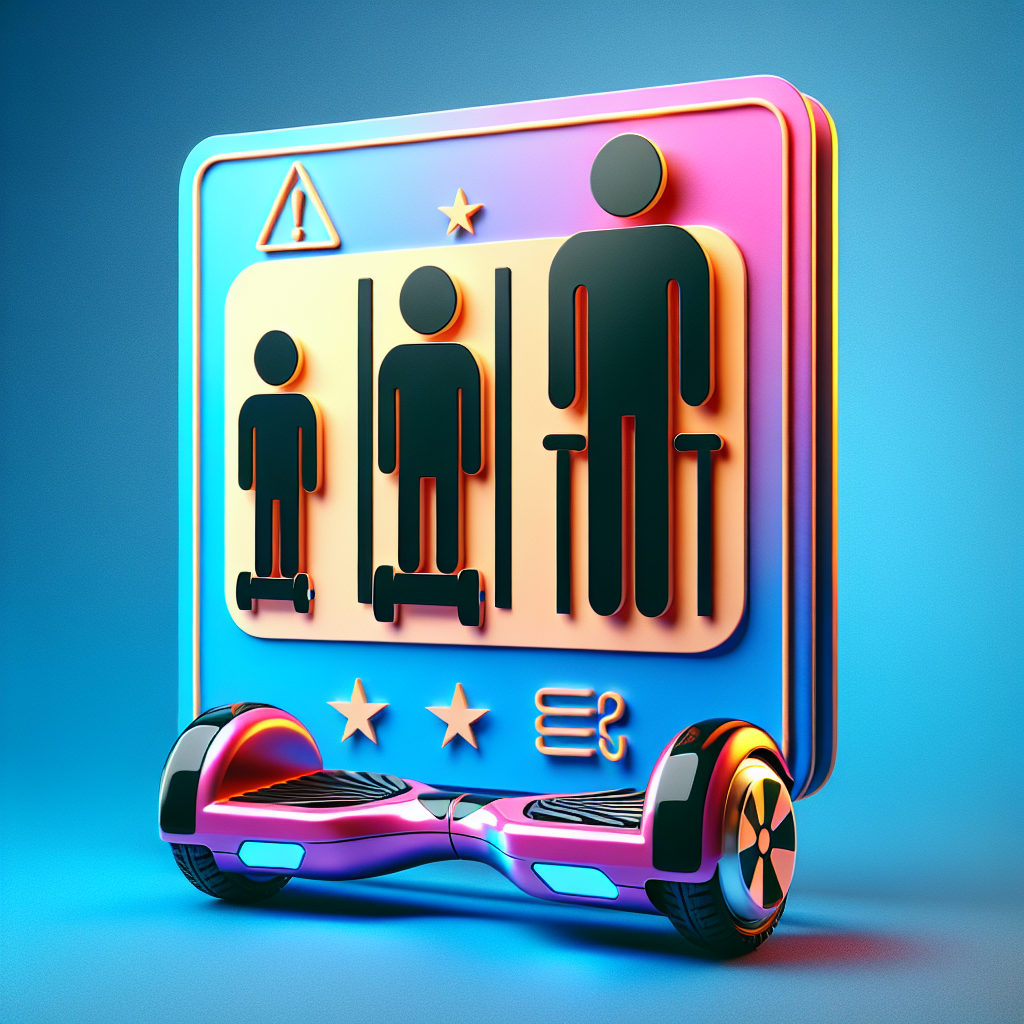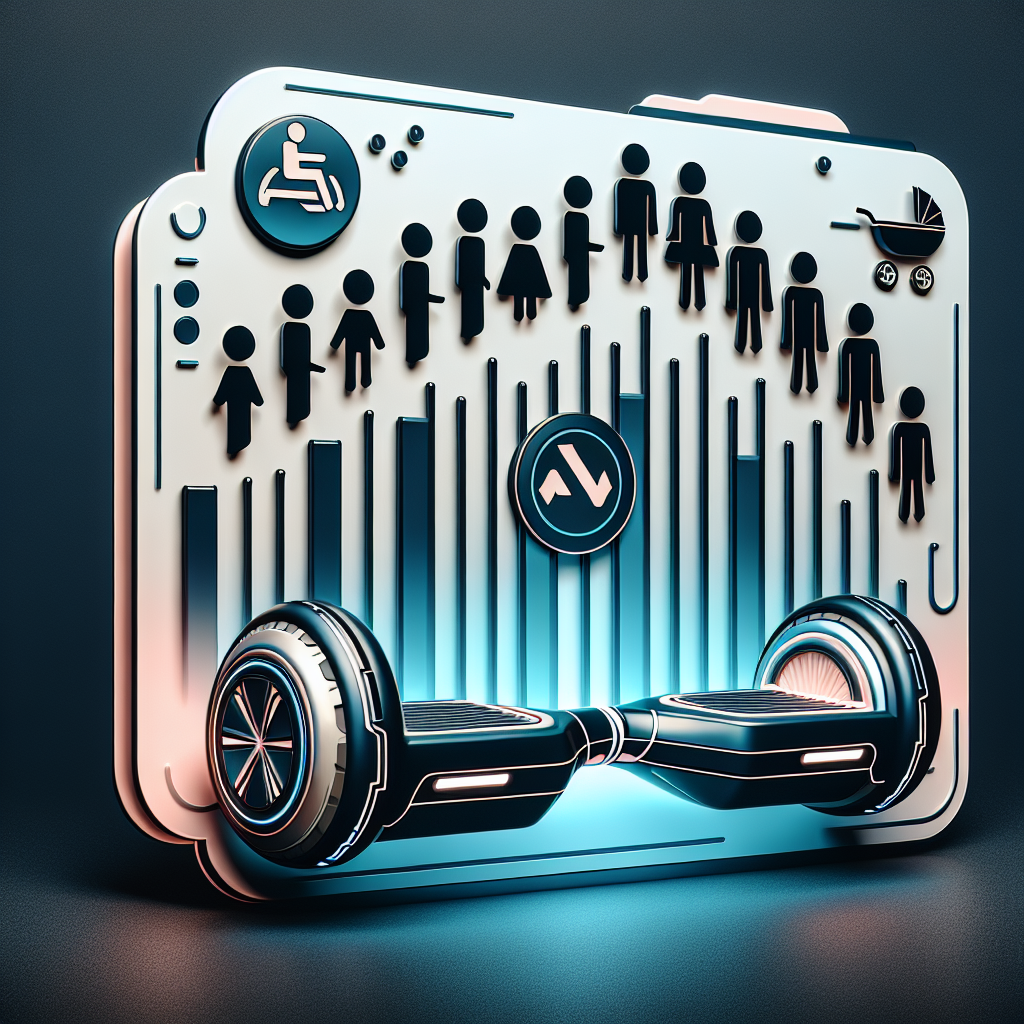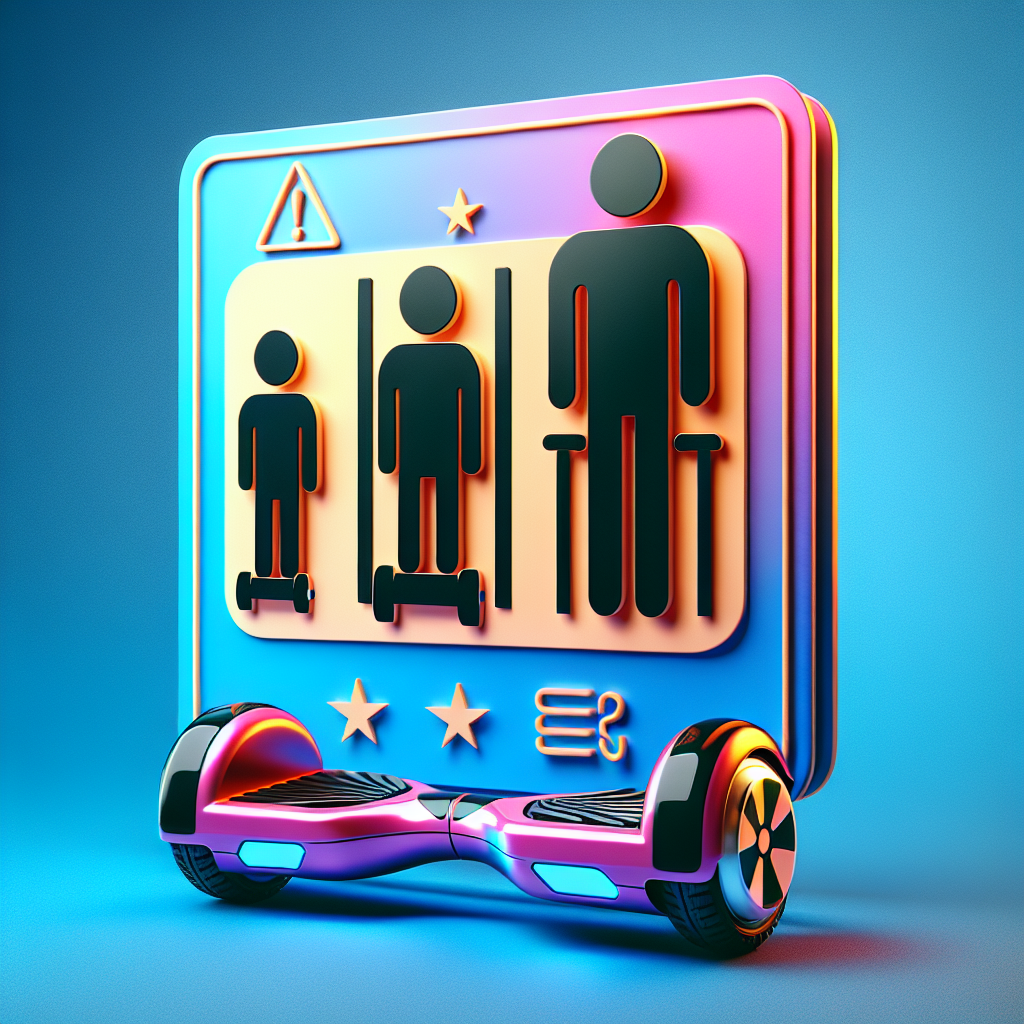Have you ever wondered if there are age restrictions for riding a hoverboard? If so, you’re in the right place! In this article, we’ll explore whether there are any specific age requirements for hopping on a hoverboard and zooming around. Whether you’re a parent concerned about your child’s safety or someone who’s just curious about the rules, we’ve got you covered. So, let’s get started and find out if there are any age restrictions for riding a hoverboard!

Safety Regulations
Hoverboards have gained popularity as a recreational mode of transportation, but it is important to prioritize safety when it comes to riding these devices. In order to ensure the well-being of riders, there are several safety regulations in place. These regulations provide guidelines and recommendations that can help minimize the risk of accidents and injuries associated with hoverboard use.
Consumer Product Safety Commission Guidelines
The Consumer Product Safety Commission (CPSC) is a governmental agency that plays a crucial role in setting safety standards for consumer products, including hoverboards. The CPSC provides guidelines for the manufacturing, labeling, and sale of hoverboards in the United States. These guidelines outline safety requirements such as having proper labeling, sufficient battery and charging mechanisms, and limits on maximum speed. Adhering to these guidelines helps ensure that hoverboards meet safety standards and can be used with reduced risk.
Manufacturer Recommendations
In addition to the CPSC guidelines, hoverboard manufacturers often provide their own recommendations for safe usage. These recommendations are based on extensive testing and research conducted by the manufacturers themselves. It is important to follow these guidelines as they are specifically tailored to the features and specifications of each particular hoverboard model. Manufacturer recommendations may include instructions on proper maintenance, recommended age limits, and safety gear suggestions.
State and Local Laws
In some jurisdictions, there may be specific state and local laws that regulate the use of hoverboards. These laws can vary from place to place, so it is essential to check with the relevant authorities to ensure compliance. State and local laws may include restrictions on where hoverboards can be used, speed limits, and safety gear requirements. It is crucial to be aware of and abide by these laws to ensure the safety of both the rider and those around them.
Physical and Cognitive Development
While hoverboards can be enjoyed by individuals of different ages, it is important to consider the physical and cognitive development of riders. Certain skills and abilities play a significant role in ensuring safe hoverboard usage. Understanding these factors can help determine the appropriate age and readiness for riding a hoverboard.
Balance and Coordination Skills
Good balance and coordination skills are crucial for safely maneuvering a hoverboard. These skills allow the rider to maintain stability and control while riding. Younger children may still be developing these skills, which could make it more challenging for them to ride a hoverboard safely. As they grow older, their balance and coordination abilities improve, making it easier for them to handle the demands of riding a hoverboard.
Decision-Making and Judgment Abilities
Hoverboards require riders to make quick judgments and decisions in various situations. This includes assessing risks, avoiding obstacles, and adapting to different riding conditions. Younger children may still be developing these decision-making and judgment abilities, which could result in a higher likelihood of accidents or unsafe behaviors. As individuals mature, their cognitive abilities develop, enabling them to make better decisions and judgments while riding a hoverboard.
Physical Strength and Endurance
Riding a hoverboard requires physical strength and endurance to maintain balance, control, and stability. Younger children may not have fully developed physical strength, which could make it more challenging for them to ride a hoverboard safely for extended periods of time. As individuals grow older, their physical strength and endurance improve, allowing them to comfortably handle the physical demands of riding a hoverboard.
Minimum Age Recommendations
Determining the minimum age for riding a hoverboard involves considering various factors such as manufacturer guidelines, CPSC recommendations, and international standards. These age recommendations are put in place to ensure the safety and well-being of riders.
Manufacturer’s Guidelines
Hoverboard manufacturers often provide specific age recommendations for their products. These recommendations are based on factors such as the product’s design, features, and safety considerations. It is important to follow the manufacturer’s guidelines, as they have extensive knowledge and understanding of their hoverboards. By adhering to these age recommendations, riders can minimize the risk of accidents and injuries.
Consumer Product Safety Commission Recommendations
The CPSC also provides recommendations regarding the minimum age for hoverboard riders. These recommendations are based on their research and analysis of hoverboard safety. While these recommendations are not legally binding, they serve as important guidelines for consumers and manufacturers. Following the CPSC’s recommendations can help ensure the safety of younger riders.
International Standards
In addition to manufacturer and CPSC recommendations, there are international standards that address age restrictions for hoverboard usage. These standards are set by organizations such as ASTM International and the European Committee for Standardization (CEN). These standards aim to establish consistent age restrictions across different countries and jurisdictions. Adhering to international standards can help promote safety and ensure consistency in age recommendations for hoverboard riders.
Supervision Requirements
Even with appropriate age restrictions and guidelines, it is essential to provide proper supervision for younger hoverboard riders. Adult supervision, combined with safety gear and protective measures, can significantly enhance the safety of the riding experience.
Adult Supervision
For younger riders, it is crucial to have a responsible adult present while riding a hoverboard. Adults can provide guidance, monitor the rider’s actions, and respond quickly in case of any emergencies. Adult supervision helps ensure that younger riders follow safety guidelines and make informed decisions while riding their hoverboards.
Safety Gear and Protective Measures
Wearing appropriate safety gear is vital for all hoverboard riders, regardless of age. This includes a properly fitted helmet, knee and elbow pads, and wrist guards. Safety gear helps protect against potential injuries and reduces the severity of accidents. Additionally, it is important to ensure that the hoverboard itself is in good condition, with properly functioning components and adequate battery safety features.

Risk Factors for Younger Riders
Younger riders may face specific risk factors that make hoverboard riding more hazardous for them. It is important to consider these factors when determining whether a child is ready to ride a hoverboard safely.
Higher Risk of Injury
Younger riders are generally more vulnerable to injuries due to their smaller size and developing physical abilities. In the event of a fall or collision, they may be more prone to fractures, sprains, or other injuries. Their bodies may not have fully developed the strength and resilience needed to handle the impact associated with hoverboard accidents.
Inability to Handle Impact
Hoverboards can reach significant speeds, and abrupt stops or collisions can result in jarring impacts. Younger riders may have more difficulty handling these impacts, which can lead to injuries. It is crucial to consider the physical capabilities of younger riders and determine if they have the strength and resilience to withstand such impacts.
Limited Awareness of Surroundings
Younger riders may have limited awareness of their surroundings while riding a hoverboard. They may be less attentive to potential obstacles or other hazards, increasing the risk of accidents. Additionally, their ability to anticipate and react to unexpected situations may be less developed, making it more challenging for them to navigate safely.
Benefits of Age Restrictions
Implementing age restrictions for hoverboard riders can bring several benefits in terms of safety, control, and accident prevention. These age restrictions help ensure that riders have the necessary skills and capabilities to handle the demands of riding a hoverboard.
Reduced Accidents and Injuries
By establishing age restrictions, the number of accidents and injuries related to hoverboard usage can be significantly reduced. Younger riders who may not have the physical and cognitive abilities to ride safely are restricted from engaging in this activity. This helps prevent potential accidents and the associated injuries.
Improved Safety and Control
Riders who meet the age requirements are more likely to have developed the necessary skills and abilities to ride a hoverboard safely. This includes balance, coordination, decision-making, and judgment skills. By having more capable riders, the overall safety and control on hoverboards can be improved.
Prevention of Potential Harm
Age restrictions help prevent potential harm to younger riders who may not be fully ready for the physical and cognitive demands of hoverboard riding. By setting an appropriate minimum age, the risks associated with hoverboard use can be mitigated, ensuring the well-being of young riders.

Age Verification and Limitations
Enforcing age restrictions for hoverboard riders can be challenging, but there are mechanisms that can aid in verifying a rider’s age and limiting access to hoverboards accordingly.
Enforcement Challenges
Enforcing age restrictions for hoverboard riders can be difficult due to the lack of standardized identification systems for individuals. This makes it challenging to accurately determine a rider’s age. Cooperation between manufacturers, sellers, and regulatory authorities is essential to address these enforcement challenges effectively.
Identification Verification
One possible solution is the implementation of identification verification systems. This could involve requiring riders to provide proof of age or using digital verification systems that are linked to official identification documents. These verification measures can help ensure that only riders of the appropriate age are allowed to ride hoverboards.
Age-Locking Mechanisms
Hoverboard manufacturers could also explore the use of age-locking mechanisms to restrict access to their devices. These mechanisms could involve the use of personalized codes or biometric authentication to ensure that only individuals of the appropriate age can activate and operate the hoverboard. While they require additional technological advancements, age-locking mechanisms can contribute to effective age restrictions.
Parental Responsibility
While age restrictions and enforcement mechanisms play a crucial role, parents also have an important responsibility in ensuring the safety of their children when it comes to hoverboard usage.
Education and Awareness
Parents should actively educate themselves about hoverboard safety and the associated risks. This includes understanding the manufacturer guidelines, CPSC recommendations, and international standards. By being informed, parents can make informed decisions regarding their child’s readiness to ride a hoverboard.
Setting Rules and Boundaries
Establishing clear rules and boundaries regarding hoverboard usage is essential. This includes specifying where and when hoverboards can be used, as well as any safety gear requirements. By setting these rules, parents can help minimize potential risks and promote safe riding habits.
Leading by Example
Parents can also lead by example when it comes to hoverboard safety. By wearing appropriate safety gear and practicing safe riding techniques themselves, parents can instill responsible and safe habits in their children. Setting a positive example highlights the importance of safety and can encourage children to prioritize safety when using their hoverboards.

Legal Consequences
Failure to comply with age restrictions for hoverboard riders can result in legal consequences for both individuals and guardians. It is important to be aware of these potential consequences to ensure compliance with applicable laws and regulations.
Fines and Penalties
Violations of age restrictions can lead to fines and penalties imposed by regulatory authorities. These penalties can vary depending on the jurisdiction and the severity of the violation. By adhering to age restrictions, individuals can avoid potential financial consequences.
Liability and Insurance
If an underage rider is involved in an accident while using a hoverboard, legal liability can fall upon the rider’s parents or legal guardians. This can lead to potential lawsuits and the need for legal representation. Additionally, insurance coverage may be affected if an underage rider is using a hoverboard against age restrictions.
Legal Guardian Responsibility
Legal guardians have a responsibility to ensure that their child follows age restrictions for hoverboard usage. Failure to do so can result in legal consequences, including potential charges of negligence or endangerment. Legal guardians should prioritize the safety and well-being of their children and comply with applicable laws and regulations.
Alternative Options for Younger Children
For younger children who do not meet the age requirements for riding a full-sized hoverboard, there are alternative options available that cater to their abilities and developmental stage.
Small Hoverboards or Self-Balancing Scooters
Small-sized hoverboards or self-balancing scooters specifically designed for younger riders can provide a safer alternative. These devices are typically slower and have reduced power to accommodate younger children’s abilities. It is important to choose a reputable brand and adhere to the manufacturer’s recommendations for these alternative options.
Age-Appropriate Ride-On Toys
Age-appropriate ride-on toys can serve as a fun and safe option for younger children who are not yet ready for hoverboard riding. These toys are designed with safety features and limitations that are suitable for the developmental stage of younger riders. Parents can consider options such as balance bikes, tricycles, or pedal cars as age-appropriate alternatives.
Training Wheels or Similar Additions
For children who are transitioning to hoverboard riding, the use of training wheels or similar additions can provide extra stability and support. These additions can help younger riders develop their balance and coordination skills gradually before fully transitioning to riding a hoverboard. It is important to ensure that these training wheels or additions are properly installed and used under adult supervision.
In conclusion, while hoverboards can be an exciting mode of transportation and entertainment, safety should always be a top priority. Following safety regulations, considering physical and cognitive development, and adhering to age restrictions can help ensure the well-being of hoverboard riders, especially younger ones. By providing proper supervision, enforcing safety gear usage, and considering alternative options when necessary, parents and guardians can play a crucial role in promoting safe hoverboard riding habits. Remember, it’s important to prioritize safety and enjoyment while riding a hoverboard!


